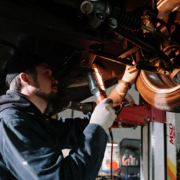The MK2 Supra stands as an emblem of automotive excellence, representing a blend of power, performance, and timeless design. From its debut in the early 1980s to its enduring legacy today, the MK2 Supra has captivated enthusiasts worldwide. In this article, we delve into the history, features, and enduring appeal of this legendary vehicle.
| Specification | Details |
|---|---|
| Production Years | 1982 – 1992 |
| Body Style | 2-door coupe |
| Engine Options | Inline-six cylinder engines |
| Engine Displacement | 2.0L (1982-1986), 2.8L (1982-1986), 3.0L (1986-92) |
| Transmission Options | 4-speed automatic, 5-speed manual |
| Drive Type | Rear-wheel drive |
| Power Output | Varies by model and year |
| Turbocharged Option | Available (from 1987 onwards) |
| Suspension | Front: MacPherson struts<br> Rear: Semi-trailing arm |
| Brakes | Front and Rear Discs |
| Wheelbase | 102.2 inches (2,596 mm) |
| Length | Approx. 181 inches (4,597 mm) |
| Width | Approx. 67 inches (1,702 mm) |
| Height | Approx. 51 inches (1,295 mm) |
| Country | Price Range (USD) | Price Range (Local Currency) |
|---|---|---|
| United States | $8,000 – $25,000 | $8,000 – $25,000 (USD) |
| United Kingdom | £6,000 – £20,000 | £6,000 – £20,000 (GBP) |
| Australia | AU$12,000 – AU$35,000 | AU$12,000 – AU$35,000 (AUD) |
| Japan | ¥800,000 – ¥2,500,000 | ¥800,000 – ¥2,500,000 (JPY) |
| Germany | €7,000 – €22,000 | €7,000 – €22,000 (EUR) |
| Canada | C$10,000 – C$30,000 | C$10,000 – C$30,000 (CAD) |
Table of Contents
Factors Influencing MK2 Supra Prices
While the MK2 Supra’s pricing varies across different countries, several factors influence the cost of purchasing this iconic sports car. Understanding these factors can provide insights into why prices may differ between markets and help enthusiasts make informed decisions when buying or selling an MK2 Supra.
Condition and Mileage
One of the most significant factors affecting the price of an MK2 Supra is its condition and mileage. Well-maintained, low-mileage examples typically command higher prices due to their rarity and desirability among collectors and enthusiasts. Conversely, vehicles in poor condition or with high mileage may sell for lower prices, reflecting the cost of repairs and maintenance required to restore them to optimal condition.
Rarity and Collectability
Certain models or variants of the MK2 Supra may be more rare and collectible than others, leading to higher prices in the resale market. Limited-production models, special editions, and variants equipped with performance-enhancing features are often sought after by collectors and enthusiasts, driving up their prices. Additionally, factors such as originality, factory options, and historical significance can further increase the collectability and value of an MK2 Supra.
Modifications and Upgrades
Many MK2 Supra owners choose to modify or upgrade their vehicles to enhance performance, styling, or customization. While tastefully executed modifications can increase the appeal and value of an MK2 Supra, excessive or poorly executed modifications may have the opposite effect, leading to lower resale values. Buyers often prefer original or lightly modified examples, as they offer greater authenticity and preservation of the vehicle’s heritage.
Market Demand and Supply
Market demand and supply dynamics play a significant role in determining the price of the MK2 Supra in each country. In regions where the MK2 Supra enjoys strong popularity and demand exceeds supply, prices are likely to be higher. Conversely, in markets with lower demand or higher availability of MK2 Supra models, prices may be more competitive. External factors such as economic conditions, consumer preferences, and regulatory policies can also influence market dynamics and pricing trends.
Geographic Location and Availability
The availability of MK2 Supra models may vary depending on geographic location and market conditions. In some countries, such as Japan and the United States, where the MK2 Supra was originally sold, a higher number of well-preserved examples may be available, leading to more competitive pricing. In contrast, in countries where the MK2 Supra was less common or not officially sold, finding a desirable example may be more challenging, potentially driving up prices for imported models.
Legal and Regulatory Considerations
Import duties, taxes, emissions regulations, and vehicle importation laws can significantly impact the cost of purchasing an MK2 Supra in certain countries. Importing a vehicle from another country may incur additional costs and administrative hurdles, affecting the final price paid by buyers. Similarly, compliance with local emissions standards and vehicle registration requirements can influence the availability and pricing of MK2 Supra models in different regions.
A Brief History
The MK2 Supra, produced by Toyota, made its debut in 1982, building upon the success of its predecessor, the Celica Supra. With sleek styling and impressive performance, the MK2 Supra quickly gained recognition as a formidable sports car. Throughout its production run from 1982 to 1992, the MK2 Supra underwent several revisions, each iteration refining its capabilities and enhancing its appeal.
Design and Engineering
One of the most striking aspects of the MK2 Supra is its design. Characterized by its long hood, short deck, and distinctive pop-up headlights, the MK2 Supra exudes an aura of sportiness and sophistication. The sleek lines and aerodynamic profile contribute to its timeless appeal, ensuring that it remains a head-turner on the road.
Beneath the hood, the MK2 Supra boasts impressive engineering prowess. Early models were equipped with a range of inline-six engines, including the renowned 5M-GE and 7M-GE powerplants, delivering exhilarating performance and a thrilling driving experience. With hot rear-wheel drive and a well-tuned suspension, the MK2 Supra offers agile handling and precise control, making it a joy to drive on both road and track.
Performance and Innovation
The MK2 Supra is renowned for its performance capabilities, thanks to its potent engine lineup and advanced technologies. Over the years, Toyota introduced various enhancements to improve power output, fuel efficiency, and overall performance. From turbocharged variants to advanced engine management systems, the MK2 Supra continually pushed the boundaries of automotive engineering, setting new standards for sports cars of its era.
One of the most notable innovations in the MK2 Supra was the introduction of electronic fuel injection (EFI), which replaced traditional carburetors and significantly improved engine efficiency and throttle response. This technological advancement not only enhanced performance but also laid the groundwork for future developments in automotive engineering.
Cultural Impact and Legacy
Beyond its performance credentials, the MK2 Supra has left an indelible mark on popular culture and automotive enthusiasts worldwide. Its appearances in movies, television shows, and video games have cemented its status as an icon of automotive excellence. From the streets of Tokyo to the highways of America, the MK2 Supra continues to inspire a new generation of enthusiasts who appreciate its timeless design and unmatched performance.
In recent years, the MK2 Supra has experienced a resurgence in popularity, with enthusiasts restoring and modifying these classic vehicles to their former glory. From engine swaps to custom body kits, the aftermarket support for the MK2 Supra remains strong, allowing owners to personalize and enhance their vehicles according to their preferences.
Evolution of the MK2 Supra
The evolution of the MK2 Supra showcases Toyota’s dedication to continual improvement and innovation. Over its decade-long production span, the MK2 Supra underwent several updates and revisions, each aimed at enhancing performance, refining styling, and incorporating advanced technologies.
1982-1986: Early Years and Initial Success
The early years of the MK2 Supra were marked by its debut in 1982, building upon the foundation laid by its predecessor, the Celica Supra. With its sleek styling, powerful inline-six engines, and rear-wheel-drive layout, the MK2 Supra quickly gained recognition as a serious contender in the sports car market. Its robust construction, combined with Toyota’s reputation for reliability, made it a popular choice among enthusiasts seeking a balance of performance and everyday usability.
1987-1992: Turbocharged Performance and Technological Advancements
In 1987, Toyota introduced a turbocharged variant of the MK2 Supra, further enhancing its performance capabilities. Equipped with a turbocharged version of the inline-six engine, the turbo MK2 Supra delivered exhilarating acceleration and increased power output, cementing its reputation as a formidable sports car.
Alongside the introduction of turbocharging, Toyota also incorporated various technological advancements, including electronic fuel injection (EFI), anti-lock braking systems (ABS), and electronically controlled suspension (TEMS), further elevating the driving experience and setting new standards for performance and refinement in its class.
Special Editions and Limited Production Models
Throughout its production run, Toyota released several special edition and limited-production models of the MK2 Supra, each offering unique features and enhancements. From commemorative editions celebrating motorsport victories to limited-production variants with upgraded performance components, these special models added to the allure of the MK2 Supra and appealed to collectors and enthusiasts seeking exclusivity and rarity.
Motorsport Success and Racing Heritage
The MK2 Supra’s racing heritage is a testament to its performance capabilities and engineering prowess. From its early days competing in motorsport events such as the IMSA GT Championship to its dominance in the Japanese Touring Car Championship (JTCC) and Group A racing, the MK2 Supra showcased its agility, speed, and reliability on the racetrack. Its success in motorsport not only solidified its reputation as a high-performance sports car but also contributed to the development of technologies and innovations that would later find their way into production models.
Legacy and Influence on Modern Sports Cars
The legacy of the MK2 Supra extends far beyond its production years, influencing modern sports cars and setting benchmarks for performance, design, and engineering. The timeless styling, powerful engines, and advanced technologies introduced in the MK2 Supra continue to inspire automakers and enthusiasts alike, shaping the future of sports car development and design. From the resurgence of the Supra nameplate with the launch of the A90 generation to the ongoing appreciation and restoration of classic MK2 Supra models, the legacy of Toyota’s iconic sports car lives on, leaving an indelible mark on automotive history.
Conclusion
In conclusion, the MK2 Supra stands as a testament to Toyota’s commitment to excellence and innovation. With its timeless design, exhilarating performance, and enduring legacy, the MK2 Supra continues to captivate automotive enthusiasts around the world. Whether as a cherished classic or a meticulously restored masterpiece, the MK2 Supra remains a symbol of automotive greatness, inspiring generations of enthusiasts to push the limits of performance and design.








Comments